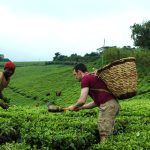Its place acts as the burial ground for the previous four Kabakas, making it a very important religious center for the royal family, a place where the Kabaka and his representatives frequently carry out important rituals related to Ganda culture.
The Kasubi tomb site is considered to be one of the UNESCO world heritage sites among others which include the Bwindi & Rwenzori mountains in Uganda.
The Kasubi tombs hill is divided into three main areas: the main tomb area located at the western end of the site, an area containing buildings and graveyards located behind the tombs, and a large area on the eastern side of the site used primarily for agricultural purposes.
The entrance to the Kasubi tombs site is a beautifully built gatehouse called Bujjabukula. According to Ganda tradition, the guards who control access to the site hide behind a see-through woven reed screen, to keep watch around the clock to control access.





















